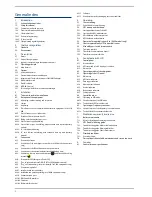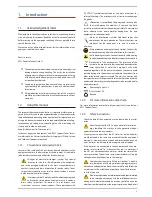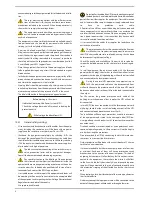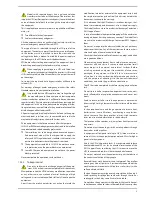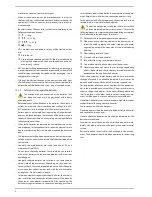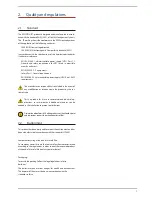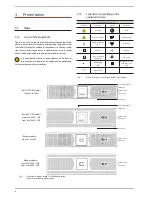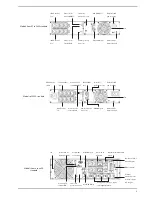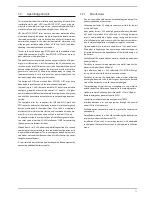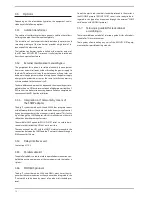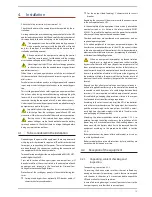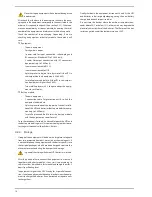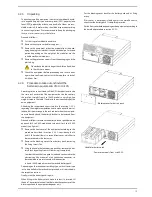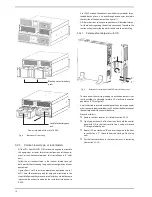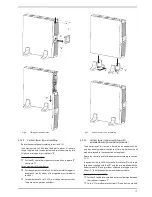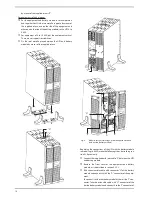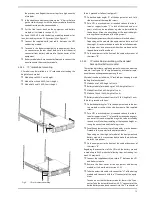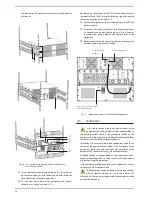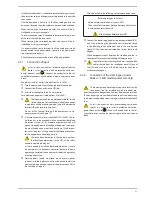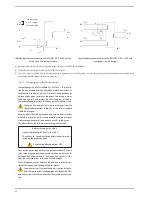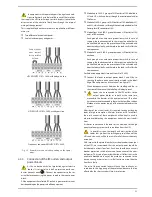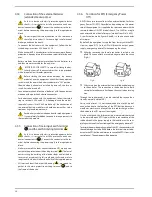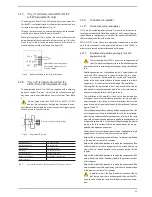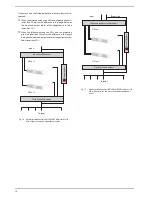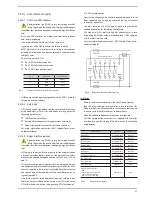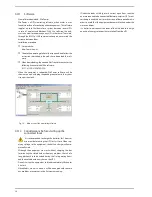
13
4. installation
• Check the Safety instructions, from section 1.2.3.
• Check that the data in the nameplate are the required by the in-
stallation.
• A wrong connection or manoeuvring, can make faults in the UPS
and/or loads connected to itself. Read carefully the instructions of
this manual and follow the stated steps in the established order.
•
The equipments can be installed and used by personnel
with no specific training just with the help of this «Manual»
only, less those ones that are hardwired, which have to be in-
stalled by qualified personnel.
•
All connections of the equipment including the control
(interface, remote panel, ...), will be done with the switches
at rest and no voltage present (UPS power supply switch to «off»).
•
never forget that the UPS is an electrical energy generator,
so the user has to take the needed cautions against direct
and indirect contacts.
• when there is only one equipment, omit all the instructions of
this document and their implicit connections as regards to par-
allel systems.
• Parallel system installation needs a switchgear panel with separate
input, output and static bypass protections, and a manual bypass
too.
• This switchgear panel allows isolating only one equipment from
the system, when facing any malfunctioning and supplying the
loads with the rest of equipments during the preventive main-
tenance or during the reparation of itself, in redundant systems.
Under request a manual bypass panel can be supplied for a single
equipment or a particular system.
•
in parallel systems, the length and cross section of the ca-
bles that go from the switchgear panel till each UPS and
vice versa, will be the same for all of them without any exception.
•
battery circuit is not isolated from input voltage. Haz-
ardous voltages can be found out between the battery
terminals and earth. Check that there is not input voltage before
doing any intervention on them.
4.1.
To be considered in the installation
• Depending on the power of the equipment, there is a power cord
with plug or it is hardwired for input and iEC outlets or hardwired
for output, as connection parts for power. The rest of connections
are done through the connectors, including the connection of
the equipment with the battery module.
• Terminals for separate bypass line are only available in KESSUPS 91RT-
models higher than 3 kVA .
• Cross cable section of the bypass, input and output lines, will
be calculated from the current stated in the nameplate of each
equipment, and respecting the local and/or national low
Voltage Electrotechnical Regulations.
• Protections of the switchgear panel, will have the following fea-
tures:
For input and bypass lines: optionally RCD devices and/or C
characteristic for circuit breakers.
For the output (load feeding), C characteristic for circuit
breaker.
Regarding the size, they will be as minimum to the currents stated
in the nameplate of each UPS.
• in the nameplate of the equipment there are only printed the
nominal currents as it is stated in the safety standard En-iEC
62040-1. To calculate the input current, the power factor and the
efficiency of the equipment have been considered.
overload conditions are considered as nonpermanent and ex-
ceptional operating mode.
• if it is added peripherals to the input, output and/or bypass like
transformers or autotransformers to the UPS, the currents stated
in the own nameplates of those elements has to be considered in
order to use the suitable cross sections, by respecting the local and/
or national low Voltage Regulation.
•
when an equipment incorporates a galvanic isolation
transformer, as standard, as an option or either installed
by yourself, either at the UPS input, bypass line, output or at all of
them, protections against indirect contact has to be fitted in (re-
sidual current device) at the output of each transformer, because
due to its specification of isolation it will prevent the triggering of
the protections fitted in the primary of the transformer in case of
electrical shock in the secondary (output of the isolation trans-
former).
• Remind you that all external isolation transformers already in-
stalled or supplied from factory, has the neutral of the secondary
connected to earth by means of a cable bridge between both
terminals. if it were required an isolated output neutral, remove
this cable bridge, keeping the precautions stated in the respec-
tive local and/or national low voltage regulations.
• According to the most current trends, all the UPSs have batteries
inside the same rack enclosure of the equipment, but in counter-
part the resultant weight in the models from 4 to 10 kVA is notori-
ously high (see the stated weights in the table 13 and/or in the
own packaging of the equipment).
Attending the recommendations stated in section 1.2.3.2. re-
garding to weight handling makes easy the installation of this
power range in a rack cabinet when the handling labours are
done manually, the battery block has to be removed from the
equipment according to the procedure described in section
4.2.4..
• battery protection is by means of fuse and internal, so it is no ac-
cessible by the end-user.
battery modules have internal protections by fuse, and they are
not accessible by the end-user too.
4.2. Reception of the equipment
4.2.1. Unpacking, content checking and
inspection
• To unpacking, see section 4.2.3.
• on receiving the device, make sure that it has not suffered any
damage in transport (impact, drop, ...) and its features correspond
with the ones in the order, so it is recommended to unpack the
UPS and make a first visual inspection.
• in case of observing damages, make all pertinent claims to the
transport agency or in their lack to our company.


